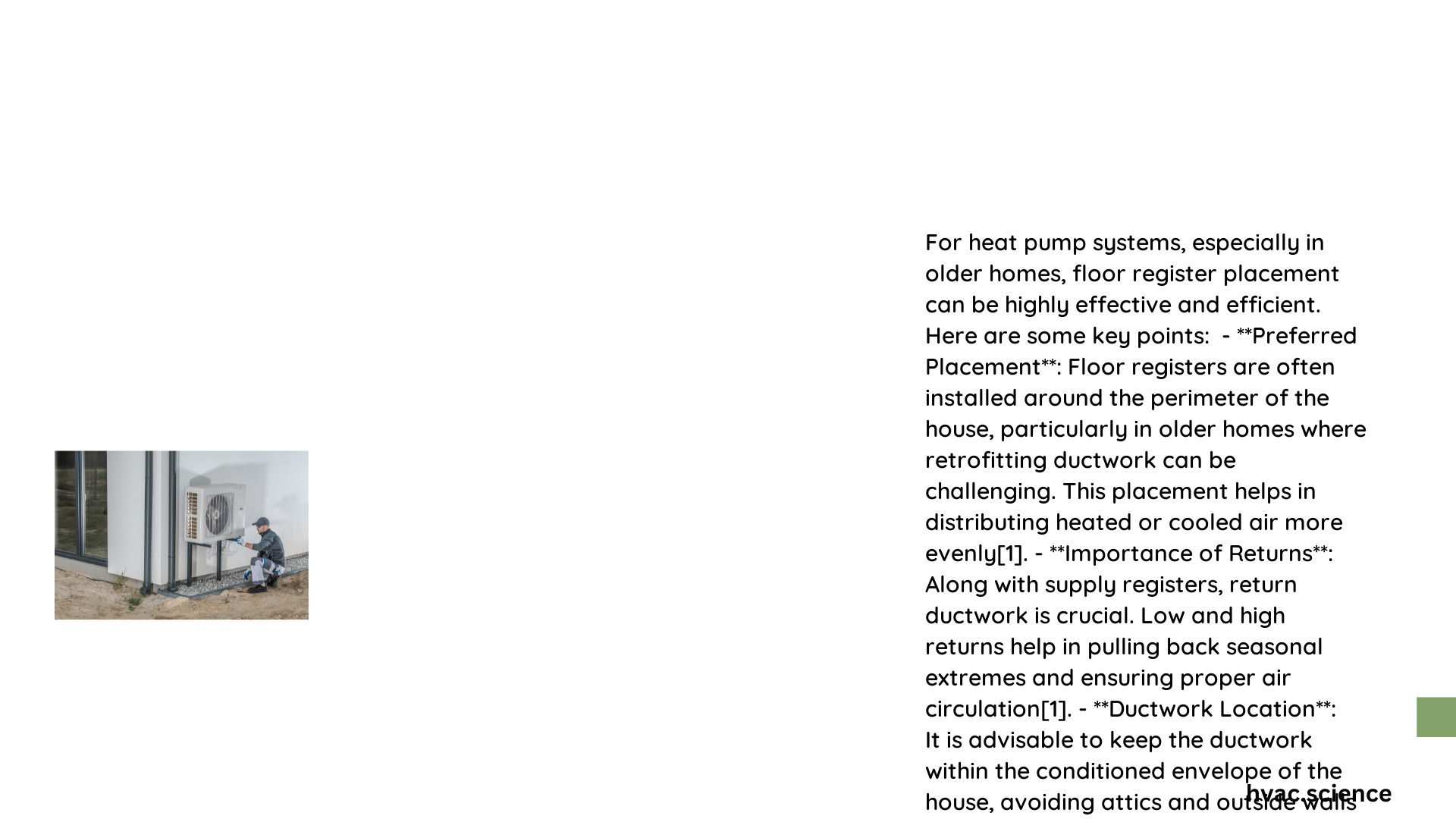Heat pump floor registers are critical components in modern HVAC systems, serving as essential interfaces between ductwork and living spaces. These precision-engineered devices facilitate efficient air distribution, temperature regulation, and overall thermal comfort in residential and commercial environments. By understanding their technical specifications, installation requirements, and performance metrics, homeowners and professionals can optimize heating and cooling system functionality.
What Are Standard Dimensions for Heat Pump Floor Registers?
Heat pump floor registers come in various standardized sizes designed to accommodate different duct configurations. The most common dimensions include:
| Register Size | Duct Height Range | Duct Width Range |
|---|---|---|
| 4×10 inches | 3.75 – 4.25 in | 9.75 – 10.25 in |
| 4×12 inches | 3.75 – 4.25 in | 11.75 – 12.25 in |
| 6×10 inches | 5.75 – 6.25 in | 9.75 – 10.25 in |
Key Considerations for Size Selection
When choosing a heat pump floor register, consider these critical factors:
- Precise Measurement: Always measure the existing duct opening accurately
- Manufacturer Specifications: Verify compatibility with your specific HVAC system
- Room Requirements: Match register size to room dimensions and airflow needs
How Do You Install a Heat Pump Floor Register?

Required Tools
- Tape measure
- Screwdriver
- Drill
- Utility knife
Installation Steps
- Prepare the Area
- Remove existing register
- Clean duct opening thoroughly
-
Inspect duct for any damage or obstructions
-
Measure Duct Opening
- Use precise tape measure
- Record height and width measurements
-
Select register matching duct dimensions
-
Register Placement
- Align register carefully
- Ensure flush fit without gaps
- Secure using appropriate mounting hardware
What Performance Metrics Matter for Heat Pump Floor Registers?
Airflow Characteristics
- Typical CFM Range: 50-200 cubic feet per minute
- Temperature Differential: 15-25°F between supply and room air
- Efficiency Indicators:
- Even air distribution
- Minimal pressure drop
- Reduced energy consumption
How Can You Maintain Heat Pump Floor Registers?
Maintenance Recommendations
- Cleaning Frequency
- Vacuum registers every 1-3 months
- Remove and wash with mild soap annually
-
Check for dust accumulation
-
Performance Monitoring
- Inspect damper functionality
- Verify proper airflow
- Listen for unusual sounds during operation
What Are Common Challenges with Floor Registers?
Potential Issues
- Improper sizing leading to inefficient airflow
- Dust and debris accumulation
- Uneven air distribution
- Potential air leakage around register edges
Expert Tips for Optimal Performance
- Choose registers from reputable manufacturers
- Prioritize precise measurements
- Consider professional installation for complex HVAC systems
- Regularly inspect and maintain floor registers
Pro Recommendation
Invest in high-quality, well-fitted heat pump floor registers to maximize HVAC system efficiency and home comfort.
Conclusion
Understanding heat pump floor registers involves technical knowledge, precise measurement, and consistent maintenance. By following professional guidelines, homeowners can ensure optimal thermal comfort and energy efficiency.
